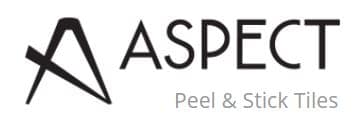3×6 Glass Tile Installation
Tolls and supplies needed:
- Protective eye wear or safety goggles
- Heavy cloth or leather gloves
- Measuring tape
- Recommended adhesive (if small tile pieces are used or wall is not flat)
- Straightedge or Speed Square®
- Non-permanent marker
- Latex primer such as Zinsser® or KILZ® (or similar products, if method 1 is used)
- Soft cloth
- Chalk line
- Level (2′ to 4′)
- Fine-grit sandpaper (400 or 600 grit) or emery cloth
If cutting tiles, one of the following tools will be needed:
- Glass cutting tool (available at any home center) OR
- Glass cutting wet saw with diamond-encrusted blade
Before you begin
For the typical do-it-yourselfer, the installation of Aspect peel & stick tiles is a relatively easy project.
Read this installation manual in it’s entirety before you start. If you have doubts about doing this installation, you should contact a qualified contractor, carpenter or professional installer.
Careful layout and tile application can still sometimes leave gaps between the tiles. To hide any gaps, we recommend using a primer, tinted with the color of your tiles on the wall to which the tiles are applied, before starting. Your local paint store can mix this for you.
Installation Methods
Method 1:
The adhesive on the back side of the Aspect metal tiles are engineered to stick to flat, primed, smooth walls.
Allow the tiles and substrate to come to room temperature (65°F to 100°F) before installation.
If you are using installation Method 1, proper wall preparation is required. Aspect can be installed over most structurally sound substrates if they are clean, flat, smooth, dry, and free of dust, wax, soap scum and grease. Acceptable substrates are drywall, plaster or clean, smooth tile (glazed, porcelain type tile; not porous or textured). Any damaged, loose or uneven areas must be repaired, patched, leveled and primed.
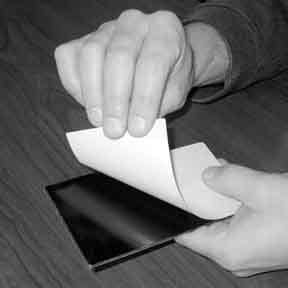
Method 2:
If you do not intend to prepare, sand and prime the surface, an additional adhesive should be used. We recommend a high-quality polyurethane construction adhesive be applied to the back of each tile in these cases.
Apply some pea-sized dots of adhesive to the back of a full tile (see right). Keep the adhesive a half-inch from the edges.
Firmly press the tiles into place. If adhesive squeezes out around the tiles, be sure to wipe it off before it dries.
Recommended Adhesives
Manus-Bond 75-AM HV Adhesive
Select a cutting method for cutting glass according to the shape of the cut that you want to make. Straight cuts can be made with a scoring tool. Compound intricate cuts should be made with a glass-cutting wet saw or by a professional glass shop. See Section 2 for more information.
There are many good guides about glass cutting on the web. Here’s a good Glass Cutting Article.
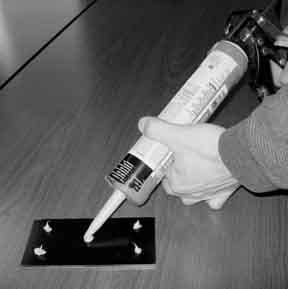
Design:
There are many tile patterns available for backsplash and other applications. Here are some popular examples. If you don’t find what you are looking for, be creative – go ahead and design your own pattern.
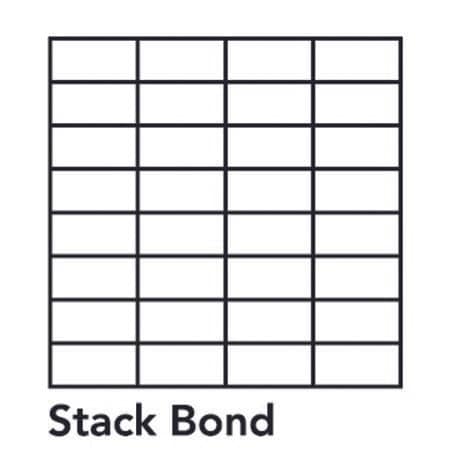
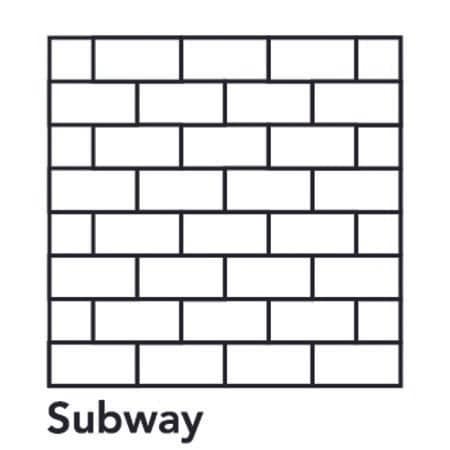
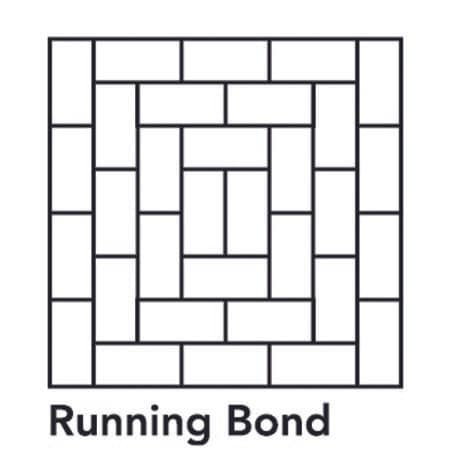
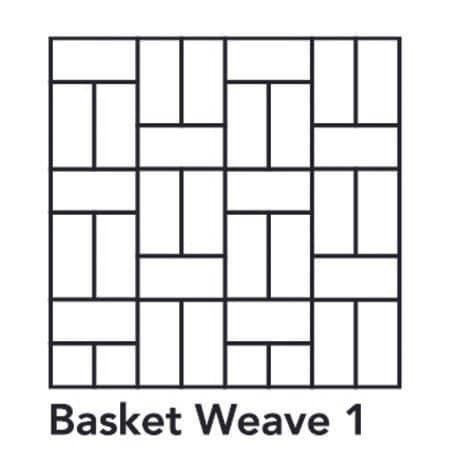
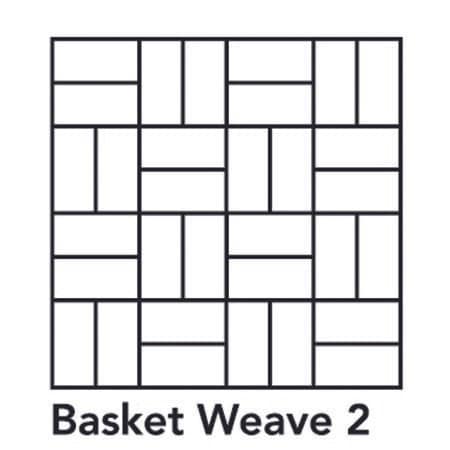
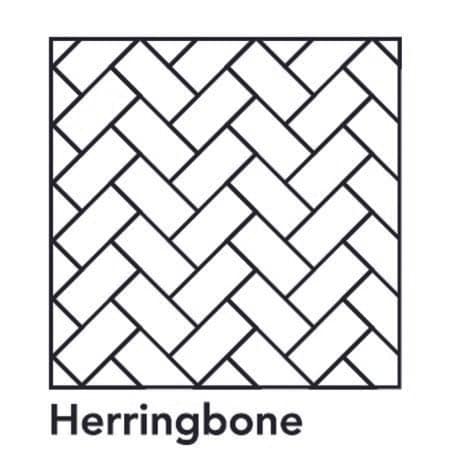
Note: See this guide for herringbone layout instructions
Layout:
One popular layout method is to begin from the center of the area to be covered. This method allows balance around the perimeter of the work area. Find the center point between the horizontal and vertical measurements and mark on the wall or work area with a pencil. Snap a vertical and a horizontal chalk line as a reference. Be sure the horizontal reference line is level and the vertical reference line is plumb.
Identify the high point(s) of your countertop by measuring from the horizontal reference line or by using a level. Snap a reference line for the top of the first row of tiles after marking 1/8″ above the highest point (at 3-1/8″) (Picture A). The top edge of the first row will be installed along this line. You can caulk the bottom gap after all the tiles are installed.
Use a level or measuring tape to mark the vertical termination point of your installation (Picture B).
Measure the first area to be covered by Aspect material. We recommend you lay out the entire project on a flat surface, like a table or the floor, before installing to the substrate, to be sure you have enough tiles and your design is correct.
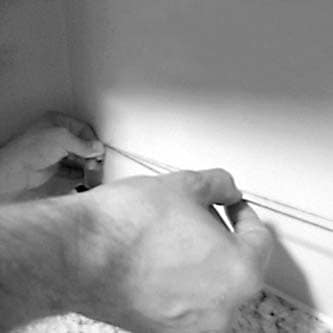

As each project is different, be sure to plan for cutouts, corners or edge treatments before applying tiles.
Installation
1) Installing your first tile:
Be sure the substrate is clean and dry. Lightly place the tile onto the wall using your reference lines. Do not apply pressure to the tile until you are sure of your placement. The aggressive design of the adhesive does not allow for repositioning after pressing firmly. If it is in the right position, firmly apply even pressure across the entire tile.
CAUTION: Do not stand or walk on release paper or a tile with release paper on the back as it is extremely slippery. Place it in a wastebasket immediately upon removal from tile.
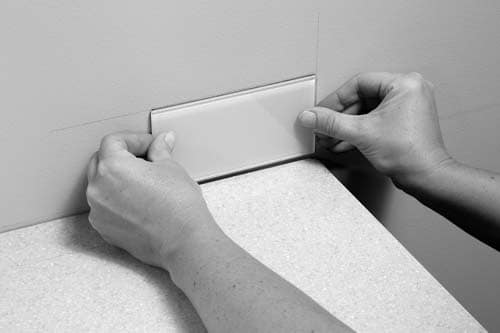
2) Cutting tiles:
Use protective eyewear or safety goggles to protect your eyes from damage. Use heavy cloth or leather gloves when cutting glass tiles as cut edges are extremely sharp.
- Measure and mark the tile with a marker on the top of the glass tile where the cut must be made. Run your finger along the surface of the glass where you plan to score before marking to remove any particles that could affect scoring.
- Applying a light oil (WD40® or even cooking oil) to the scoring wheel will help achieve smoother scoring lines. Apply pressure to the glass as you pull the cutter along the surface, rolling on the scoring wheel. The score must run from one edge of the glass to the other edge.
- When scoring, a gritty sound means that you are pushing too hard. A smooth, tearing sound is what you want. Score along a straight edge. Use a metal ruler or straightedge.
- After scoring, the tiles can be broken on a table. Place a soft cloth or cardboard on the table to prevent damage. Place the tile, finished side up, with the score along the edge of a table then push the part to be cut downward. You can also just grip the glass firmly, one hand on either side of the score. Then use a snapping action with your wrists to break the glass.
- Use fine sandpaper or emery cloth to smooth and debur sharp edges resulting from glass cutting. Be careful not to scratch the finished surface of the glass.
Follow all safety procedures, including using safety eyewear and protective gloves when using scoring tools and cutting glass. If compound or notched cuts, around an outlet for example, are required, you may need to use a wet glass-cutting saw, available for rent from most home centers. In many cases, cuts that you cannot make with a scoring tool can be easily done by a professional glass shop. Remember to mark your tiles for cutting first.
3) Install and/or cut remaining tiles
Install the next 10 to 12 subsequent tiles by light tacking or pressing them on the wall. At this time verify that the tiles are lining up straight and square.
If they are you can press on the tiles to secure them firmly to the wall. If some of the tiles have come out of alignment you can work backwards and “pop” the tiles off using a putty knife. Then reapply the tiles making small adjustments to each tile to regain alignment. Continue to install in batches of 10 to 12 tiles in a similar manner.
Allow 24 hours for the tiles’ adhesive to set before exposing them to a heat source (such as a stovetop or oven). Clean or touch up tiles with a glass cleaner and soft cloth or paper towels.
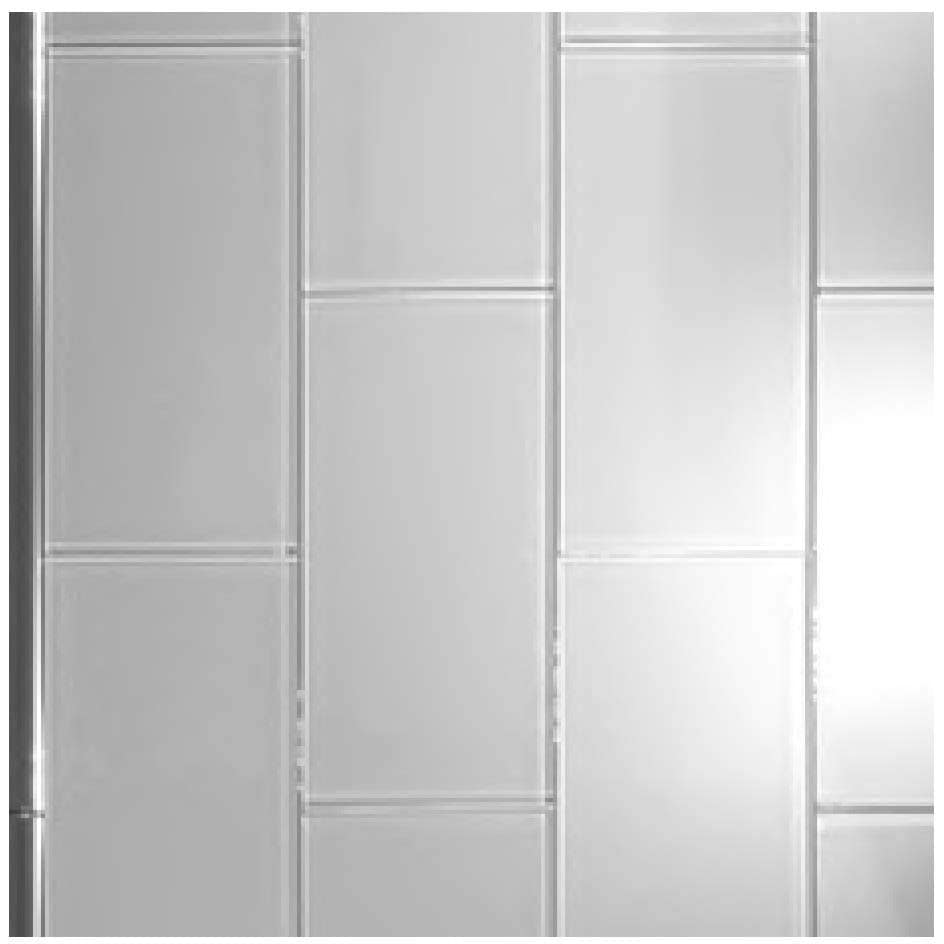
4) Edge Finishing
To finish the edges of your tile backsplash, Aspect trim is available to match every tile finish. A second option is to seal the outside edges with caulk using the same materials and method used to seal the gap under the bottom row of tiles
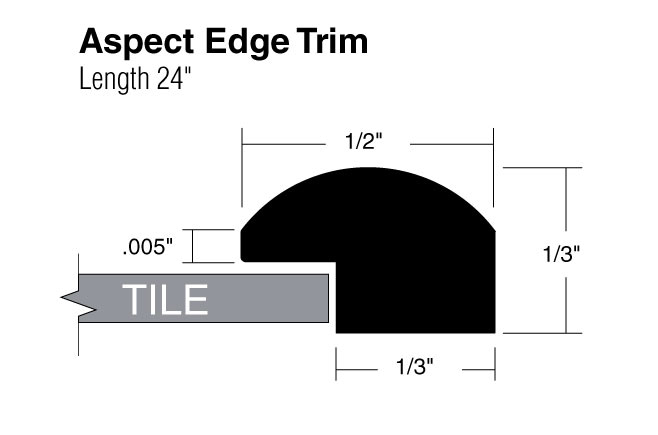
Tips and Techniques
Adhering Small Pieces
Use tube adhesive for cut pieces of Aspect that are less than a third of a full tile.
Fitting Partial Tiles
To fit partial tiles, lay the tile to be cut exactly over the last full tile. Place another full tile against the wall and mark the cutting line where the tiles overlap. Cut tile on line. Before peeling the backing paper off self-adhering tile, check that the cut tile fits. Do not force it into place. Install tile (removing paper from self-adhering tile), and press tile firmly into position.
